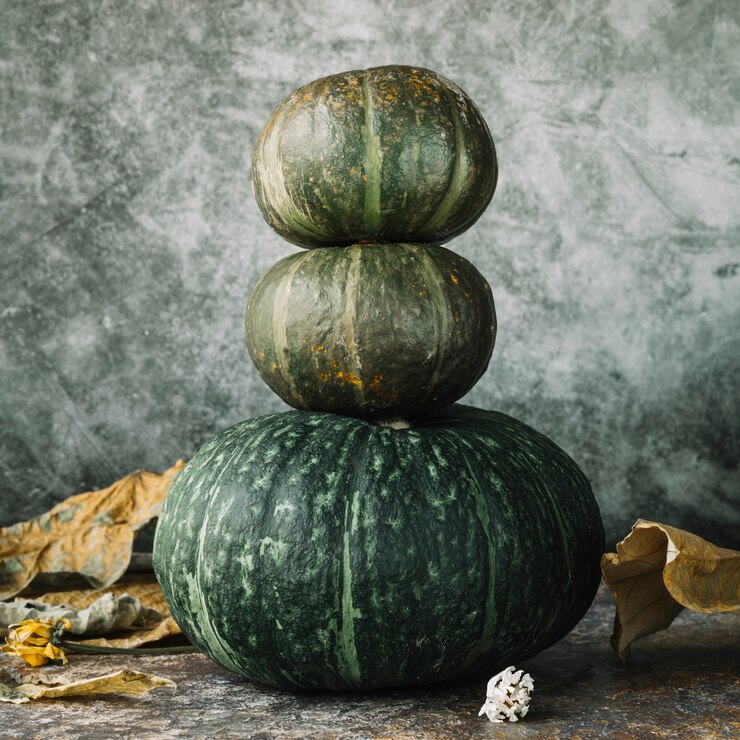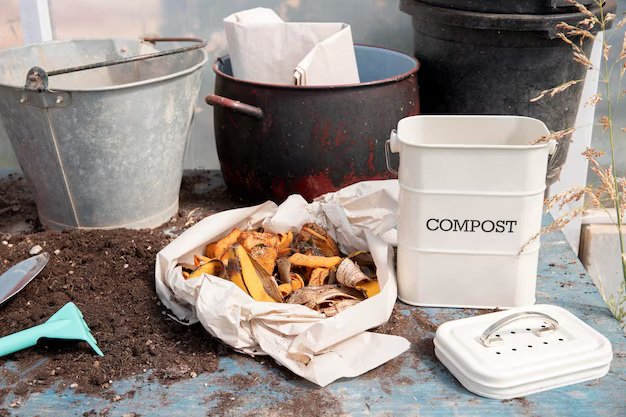Green Pumpkins: History, Cultivation, and Sustainability
When you hear the word “pumpkin,” chances are you picture the bright orange ones stacked outside grocery stores, ready to be carved into jack-o’-lanterns or baked into pies. But have you ever thought about green pumpkins? These lesser-known beauties have been around for centuries, offering a unique blend of flavour, nutrition, and versatility that often goes unnoticed.
Green pumpkins aren’t just unripe versions of their orange counterparts—they belong to specific varieties with their own distinct characteristics. From the earthy sweetness of kabocha squash to the firm texture of young, green pie pumpkins, these fruits play an important role in global cuisines, particularly in Asian, African, and Latin American dishes.
If you’re a gardener, green pumpkins can be an exciting and rewarding crop to grow, with hardy resistance to pests and excellent storage potential. Farmers looking for speciality produce can find a profitable niche in selling these to local markets and chefs. And if you’re a food lover, there’s a whole world of flavours waiting to be explored.
This guide will walk you through everything—history, planting, harvesting, cooking, and even the nutritional benefits—so you can fully appreciate the magic of green pumpkins. Let’s dive in!

In This Article
- A Brief History of Green Pumpkins
- How to Grow Green Pumpkins: A Step-by-Step Guide
- Culinary Uses of Green Pumpkins
- Market Potential and Sustainability
- Conclusion
A Brief History of Green Pumpkins
Origins and Evolution
Green pumpkins, like all pumpkins, trace their lineage to the ancient Americas. Indigenous peoples of Mexico and Central America were growing pumpkins as early as 7,500 BC, using them not just for food but also for medicinal and storage purposes. Over time, these early squashes were selectively bred for taste, texture, and adaptability, leading to the wide variety of pumpkins we know today.
While most people picture pumpkins as bright orange, green pumpkins have existed just as long. Some are simply young, unripe versions of their orange counterparts, while others, like the Japanese Kabocha or the Italian Marina di Chioggia, remain green even when fully mature. These varieties have been cultivated for centuries, prized for their rich flavours and unique textures.
Japan, in particular, has a deep history with green pumpkins. Kabocha, a dark green, slightly bumpy-skinned squash, was introduced by Portuguese traders in the 16th century and quickly became a culinary staple. In Italy, the Marina di Chioggia, with its warty skin and sweet flesh, has been beloved for generations. These varieties showcase the rich diversity of green pumpkins, proving they’re more than just an unripe stage of the classic pumpkin.
Key Varieties
| Variety | Origin | Distinct Features |
|---|---|---|
| Kabocha | Japan | Sweet, dense flesh, dark green skin |
| Marina di Chioggia | Italy | Bumpy skin, rich, sweet flavor |
| Thai Kang Kob | Thailand | Firm flesh, ideal for cooking |
| Shishigatani | Japan | Curved shape, nutty taste |
How to Grow Green Pumpkins: A Step-by-Step Guide
Choosing the Right Variety
Before planting, you need to decide—heirloom or hybrid? Heirloom varieties like Kabocha and Marina di Chioggia are cherished for their rich history, deep flavours, and creamy texture. They tend to have stronger natural resistance to pests but might require more care. Hybrids, on the other hand, are bred for disease resistance and higher yields. If you’re looking for something reliable and productive, a hybrid might be the way to go.
Preparing Your Soil
Green pumpkins thrive in well-drained, nutrient-rich soil with a pH between 6.0 and 6.8. To set them up for strong, productive green pumpkin vines, soil quality is everything. They thrive in well-draining, nutrient-rich soil with a pH between 6.0 and 6.8. Here’s how to set them up for success:
- Choose a sunny location – Aim for at least 6–8 hours of direct sunlight daily. Pumpkins love warmth.
- Enrich the soil – Mix in compost, aged manure, or well-rotted organic matter to improve fertility and structure. If your soil is sandy, adding organic matter helps retain moisture. If it’s clay-heavy, compost or coarse sand can improve drainage.
- Check drainage – Poorly drained soil leads to root rot. If your garden retains too much water, consider planting in raised beds or mounds.
Gardener’s Experience: “The first time I planted pumpkins, I underestimated the importance of soil prep. I thought a bit of fertilizer would do the trick, but my vines struggled in compacted soil. Now, I always loosen the soil and mix in organic matter before planting—it’s a game-changer!” – Mark Reynolds, Experienced Home Gardener
According to the University of Massachusetts Amherst, incorporating compost or manure improves soil quality and promotes healthy pumpkin growth. Similarly, the Royal Horticultural Society (RHS) recommends applying a thick layer of organic mulch after planting to help retain moisture and suppress weeds. Research published in HortScience indicates that balancing the amounts of nitrogen, phosphorus, and potassium in the fertilizer can significantly improve pumpkin yield.
When to Plant
Pumpkins love warmth. The best planting time depends on where you live:
- U.S. Zones 3-6: Late May to early June.
- U.S. Zones 7-10: March to April.
Pro Tip: Direct seeding works best. Pumpkins dislike root disturbance, so skip the transplanting if you can!
Proper Care and Maintenance
Watering and Fertilisation
Watering green pumpkins properly is key to their growth. These plants need about 1 to 1.5 inches of water per week, and not just a quick sprinkle. Instead, go for deep watering, meaning you should soak the soil thoroughly so the roots grow deep and strong. Shallow watering leads to weak plants that struggle to produce good fruit. If you’re not sure whether your plants are getting enough, stick your finger in the soil. If the top inch is dry, it’s time to water.
Fertilizer Schedule
Think of fertiliser as fuel for your pumpkins. Without the right nutrients, your plants will struggle to grow big, healthy fruit.
- Before planting: Mix a balanced 10-10-10 fertiliser into the soil (that’s equal parts nitrogen, phosphorus, and potassium).
- Mid-season: Once the vines start spreading, switch to a potassium-rich fertiliser to help with fruit development.
Common Pests and Diseases
Even the healthiest pumpkin plants can attract pests, most of which are Squash bugs, vine borers, and powdery mildew.
- Organic Pest Control: A spray of neem oil or a dusting of diatomaceous earth keeps pests in check.
- Prevention Tips: Rotate your crops every year and avoid overhead watering, which can lead to fungal diseases.
Harvesting
Signs of Readiness
Not all green pumpkins are created equal—some stay green even when fully ripe, while others are meant to be picked before they mature. The key is to observe a few simple signs. First, check the skin. A ripe green pumpkin will have a firm, hardened outer shell that resists being punctured by a fingernail. The colour should be rich and deep, rather than pale or weak. Another clue is the stem. If it starts to dry out and turn brown, the pumpkin is likely ready to be picked. If the stem is still soft and green, it might need more time on the vine.
Harvesting Technique
Once you’ve determined your pumpkin is ready, harvesting it correctly is crucial. Use sharp pruning shears or garden scissors to cut the stem, leaving at least 2-3 inches attached to the pumpkin. This small detail helps prolong storage life and prevents premature rotting. Avoid twisting or pulling the pumpkin off the vine, as this can cause unnecessary damage to both the fruit and the plant.
Learn More: How to Preserve Carved Pumpkin Sustainably
Culinary Uses of Green Pumpkins
Cooking and Recipes
Green pumpkins are popular in many global cuisines, from Japanese tempura to Mediterranean stuffed dishes. Their firm texture holds up well to different cooking methods, making them perfect for roasting, frying, or even blending into soups. If you enjoy experimenting in the kitchen, here are a few tasty ways to use them in your meals:
- Kabocha Tempura – In Japan, kabocha (a type of green pumpkin) is a favorite ingredient for tempura. Sliced into thin pieces, dipped in a light batter, and deep-fried, it turns golden and crispy on the outside while staying soft and sweet inside. It’s a perfect side dish or snack, especially when served with a simple dipping sauce.
- Green Pumpkin Soup – If you love a warm and comforting bowl of soup, green pumpkin is a fantastic ingredient. It blends into a smooth, creamy texture and pairs well with garlic, onions, and a hint of nutmeg. This soup is perfect for chilly days when you want something cozy and nutritious.
- Stuffed Green Pumpkin – In Mediterranean cuisine, green pumpkins are sometimes hollowed out and filled with a mixture of rice, herbs, and spices. Baked until tender, this dish brings out the pumpkin’s subtle sweetness while allowing the filling to absorb all the rich flavors.
Nutritional Benefits
Beyond their delicious taste, green pumpkins are packed with nutrients that make them a great addition to a balanced diet. They’re rich in vitamins A and C, both of which help support your immune system and keep your skin healthy. They also contain fiber, which is essential for digestion and gut health.
Here’s a quick look at the nutritional value of green pumpkins per 100g:
| Nutrient | Amount |
|---|---|
| Calories | 40 kcal |
| Carbohydrates | 9 g |
| Fiber | 1.5 g |
| Vitamin A | 25% DV |
| Vitamin C | 20% DV |
Market Potential and Sustainability
Growing Popularity
With the rise of farm-to-table dining and the growing demand for organic produce, green pumpkins are stepping into the spotlight. Once overlooked in favor of their orange counterparts, these unique pumpkins are now making their way into specialty markets, farmers’ markets, and high-end restaurants. Chefs and home cooks alike are discovering their versatility, using them in soups, curries, and even desserts. Their slightly earthy, nutty flavor pairs well with both sweet and savory dishes, making them a hidden gem in the culinary world.
Sustainability Factors
One of the biggest advantages of green pumpkins is their contribution to sustainability. Unlike many other crops, almost every part of the green pumpkin is edible, reducing food waste significantly. The flesh is packed with nutrients, the seeds can be roasted for a healthy snack, and even the skin can be cooked down or composted.
Low Waste
From farm to table, green pumpkins promote sustainability by ensuring that little goes to waste. Consumers and farmers alike benefit from their full usability, making them an eco-friendly food choice.
Climate Adaptability
Green pumpkins are also highly adaptable, thriving in various climates with minimal inputs. They require less water than other crops and can grow in diverse conditions, making them an excellent choice for sustainable farming. Their resilience means they can be cultivated in regions facing climate challenges, offering a promising future for both farmers and consumers.
Learn More: Best Organic Fertilizers for Vegetables
Conclusion
Green pumpkins offer a unique alternative to standard orange pumpkins, providing superior flavor, nutrition, and versatility. Whether you’re a gardener, chef, or eco-conscious consumer, growing and using green pumpkins can be a rewarding experience.
Actionable Tips
- Choose the right variety based on your climate and culinary needs.
- Prepare soil well with compost for healthy plants.
- Monitor watering and pest control practices carefully.
- Harvest at the right time to maximize flavor and storage life.
- Experiment with recipes—green pumpkins are more versatile than you think!







